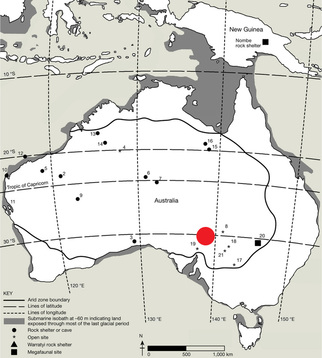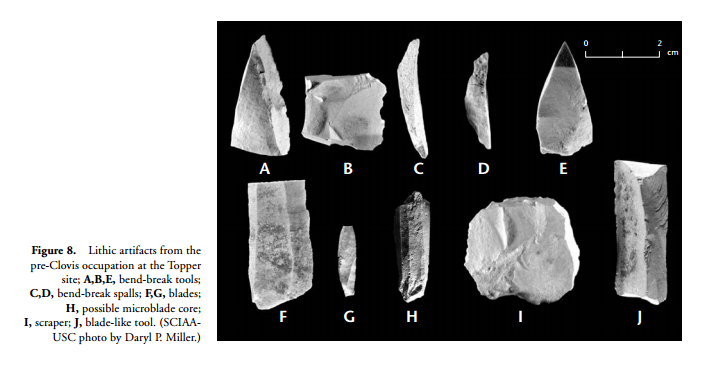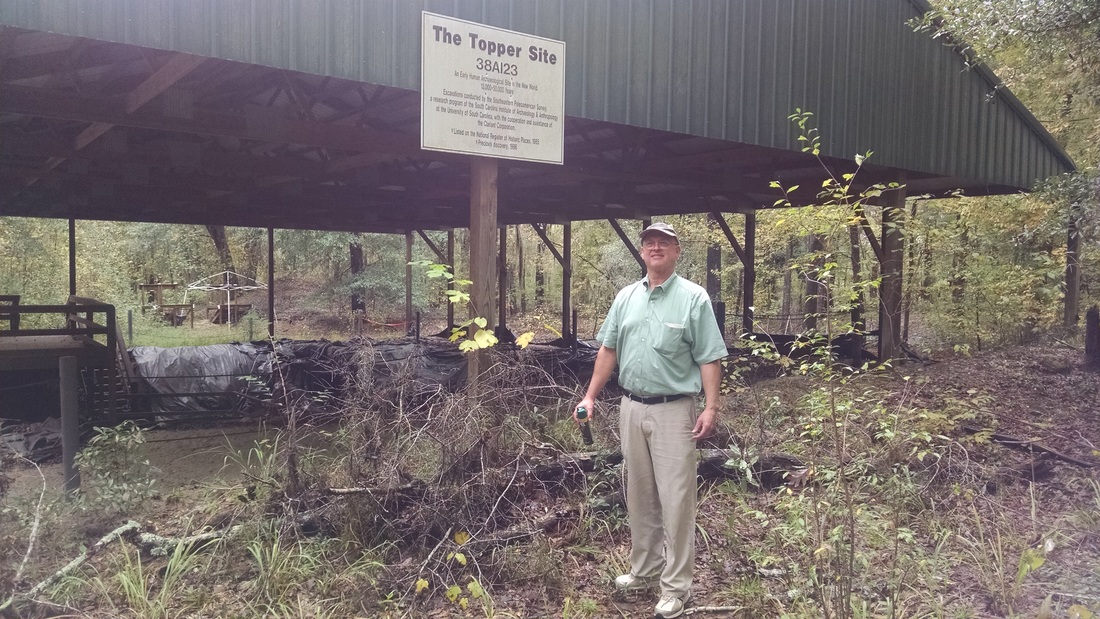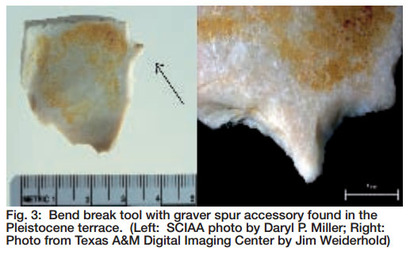 Location of Warratyi rock shelter (modified from Hamm et al. 2016).
Location of Warratyi rock shelter (modified from Hamm et al. 2016). This one caught my attention not only because it adds important information to what we know about the colonization of Australia, but also because of the ongoing controversy about the claimed 55 KYA lithic assemblage from the Topper site in South Carolina (I wrote a little about my first impressions of Topper here).
One of the main questions about the early "artifacts" from Topper is whether or not they're actually artifacts (i.e., things made or modified by humans). In this 2005 paper (page 110) my colleague Al Goodyear describes the Topper assemblage as
"remarkable for its nonbifacial character and its emphasis on microlithic-sized artifacts, specifically bend-break burin-like tools. . . . The emphasis on microlithic tools, as well as core choppers, suggests some type of craft activity. The presence of microliths may imply the manufacture of organic artifacts from bone, antler, wood, and ivory."
So what does the lithic assemblage from the early occupations at Warratyi look like? It's hard to tell from the publication. This is what the authors say about the lithics:
"Stone artefacts were found throughout the deposit (Fig. 2) with concentrations at depths of 5–20 cm (corresponding to SU1–upper part SU2) and 60–80 cm (SU3). The lithic assemblage is mostly composed of whole flakes, broken flakes and waste material. Stone artefacts were made from a range of raw materials, reflecting a change in use of preferred rock-type over time. Tools in the lowermost units were predominantly made of quartz. In the upper part of SU2 and in SU1, chert and silcrete become major components. This pattern was also reflected by changes in tool types; SU1 and SU2 contained predominately backed and small hafted tools, whereas SU3 and SU4 contained whole and retouched flakes (Extended Data Fig. 5)."
Stratigraphic Units 3 and 4 (SU3 and SU4) appear to date from about 33 KYA to 49 KYA, so those are the ones of interest in terms of comparisons with Topper. Other than the description "contained whole and retouched flakes" the paper doesn't appear to have much information of the lithic artifacts from the earliest portions of the deposits. I can't tell which (if any) of the stone artifacts shown in their figure are from SU3 and SU4. I didn't notice a mention of bifaces or bifacial flaking debris. There is a bone point from SU3 that reportedly dates to about 40 KYA.
So . . . that's about all I have to say about that for now. I skimmed the article quickly, so it may be that I missed something with regard to the lithic assemblage. It would be interesting to have some additional qualitative and quantitative data about the tools and debris from those earliest deposits.





 RSS Feed
RSS Feed
